Asus P5WD2 Premium: DDR2-1066 and the Promise of 955x SLI
by Wesley Fink on May 11, 2005 12:05 AM EST- Posted in
- Motherboards
Corsair and Asus Reach DDR2-1066
It was clear in our early testing of the Asus P5WD2 Premium that Asus was interested in showing the standout memory performance of their new 955X motherboard. Toward this end, Asus, Corsair and OCZ all worked on low-latency DDR2 memory solutions that would perform well in the P5DW2.OCZ and Corsair both supplied low-latency DDR2-667 512MB DIMM pairs for benchmarking with the Asus P5WD2 Premium.
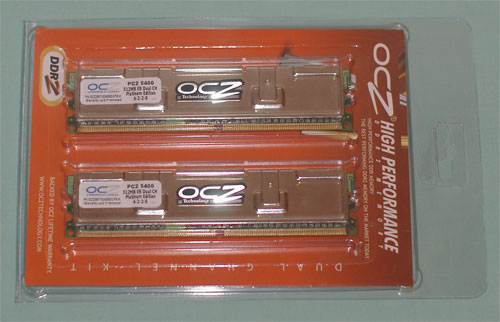
Corsair supplied their CM2X512A-5400UL.
It was established quickly that both memories could do DDR2-667 at 4-2-2-4 timings on the P5WD2, so we pushed both to DDR2-800. Both ran with complete stability at DDR2-800, at the still aggressive 4-3-2-4 timings. Since neither memory pair had any problem with DDR2-667 or DDR2-800, all benchmarks were run at both memory speeds. DDR2-667 is the rated speed of 955x memory, and DDR2-800 is the next logical speed rating.

We were amazed to find that the Corsair CM2X512A-5400UL could reach DDR2-1066. This yielded a Sandra standard bandwidth of just over 6400 MB/sec. To put this in perspective, this is the first motherboard and memory that we have ever tested capable of running at DDR2-1066. Frankly, 1066 required slower 5-5-5-15 timings at the maximum 2.3V available on the Asus. We also needed to push all chipset and bus voltages to the maximum and set CPU voltage at 1.60V to achieve this milestone.
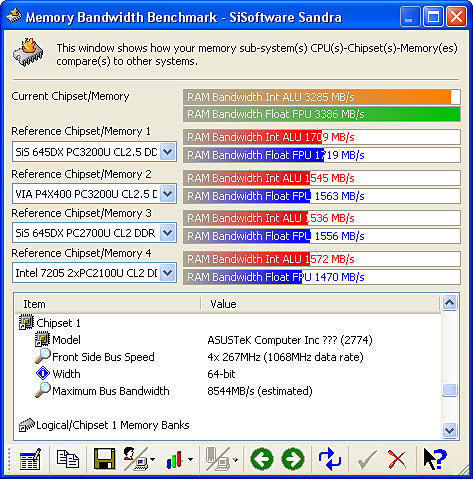
The OCZ PC2-5400 took a different approach at the top of the performance curve.
The OCZ reached DDR2-1000 on the Asus P5DW2 Premium, but at faster 5-3-2-4 timings.
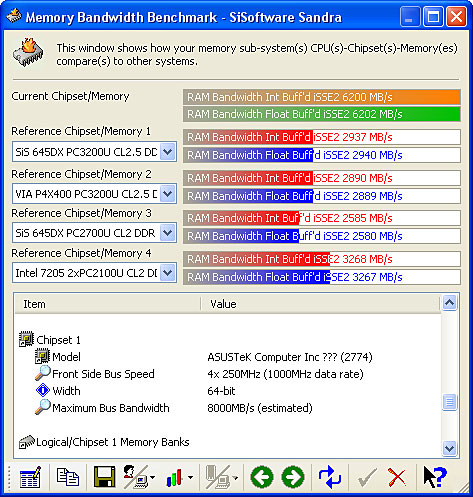
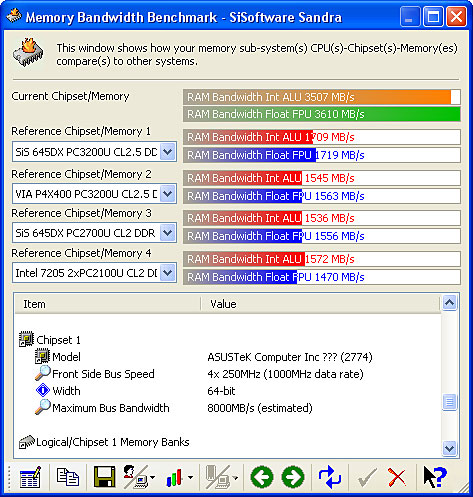
We'll leave it to the memory manufacturers to argue which is better, since performance of the Corsair and OCZ is essentially the same on the new Asus P5DW2 Premium. However, no matter how you view the results, Corsair has earned the title of fastest memory speed in this round at DDR2-1066. There is also the advantage of being able to run the 3.46EE processor at the full rated speed of 1066 FSB with the memory running at 1066.



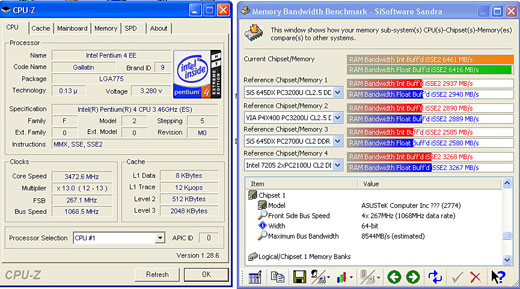
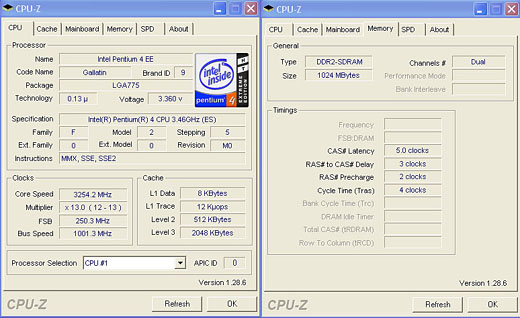








34 Comments
View All Comments
fitten - Wednesday, May 11, 2005 - link
#5 Differences of 3% are usually in the noise of the type tests that most benchmark sites run. 3% is effectively 0% since that is beneath the precision of the tests.Calin - Wednesday, May 11, 2005 - link
Higher speed memory will only give you a real performance boost if you use one of the fastest processors. On a slower processor, all that extra memory bandwidth will not help at all (or very little)Carfax - Wednesday, May 11, 2005 - link
I wonder, is Intel ever going to introduce processors with a FSB greater than 1066 before they go to CSI? All this DDR2 bandwidth is going to waste..Darth Farter - Wednesday, May 11, 2005 - link
what is the msrp for these boards, cause that $255/$248 prices on newegg/ZZF are hard to ignore...Pjotr - Wednesday, May 11, 2005 - link
"i thought hypertransport was an amd thing, not an intel or nforce thing....."nVidia uses HyperTransport between NB and SB. They have since nForce1 on AMD and they also use it in X-Box, if you didn't know.
Wesley Fink - Wednesday, May 11, 2005 - link
#5 - We didn't measure the difference in nF4 Intel and nF4 AMD at 2T. It was a subjective comment. So I have tried to better explain what I found in the paragraph you quote:"On the nF4 Intel platform, the performance impact of a 2T Command Rate appears to be rather small, as the nF4 Intel performance remains very competetive with the 955x as far as it goes. However, at just over DDR2-900, the nF4 Intel appears to hit a wall . . ."
Zebo - Wednesday, May 11, 2005 - link
"it would have been better to include a fx-55 as competition "Not for INTC;)
Man that's a nice chipset they got though so missed from nV:)
Wesley Fink - Wednesday, May 11, 2005 - link
overclockingoodness -Both boards are rated at DDR2-667, but both easily ran DDR2-800 with the right memory, which is the next logical memory speed. We mainly wanted to see if DDR2-800 made any real performance difference, and the answer is no in Office and Multimedia, and yes in most gaming. For the future this also gives us a full set of benchmarks at DDR2-800 for comparison if we choose to use them.
We also found the Asus 955X did a marginal DDR2-1066 in early testing so it seemed reasonable to at least test and report benchmarks at the very stable DDR2-800 in addition to DDR2-667. We won't be doing this with all future boards, but the tests did provide some answers to our questions.
mrwxyz - Wednesday, May 11, 2005 - link
i thought hypertransport was an amd thing, not an intel or nforce thing.....Lonyo - Wednesday, May 11, 2005 - link
On page 5 you mention 2T having less of an impact than with AMD boards.Does that mean it has absolutely zero impact then?
There's a thread on the forums showing 2T for AMD haveing REAL WORLD impacts of maybe 3% slowdown, nothing more except in synthetic tests, so I suppose on the Intel board it makes maybe 1% difference.